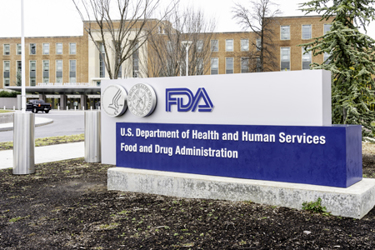Getting Generic Drugs Right: FDA Revises ANDA Guidance
By Tim Sandle, Ph.D.

Toward the end of the cycle for developing a generic pharmaceutical product, an application for approval needs to be made to the competent authority. For the U.S. FDA, these applications are referred to as abbreviated new drug applications (ANDAs). Once approved, an applicant may manufacture and market the generic drug product to provide a safe, effective, low-cost alternative to the American public. Ensuring you include sufficient detail and data analysis is essential if the agency is to approve the application. Requests for more information or outright rejection can push the application timeline back many months or even years.
The core content of an ANDA presents information on the safety, effectiveness, and quality of the generic drug. This information must be equivalent to the brand-name drug the application references (the “reference listed drug”). The ANDA differs from a new drug application in that it is not required to include preclinical (animal and in vitro) or human clinical trial results. Instead, the emphasis is on bioequivalence so that more affordable medicines can be introduced onto the market without repeating costly and duplicative clinical trials to establish safety and efficacy.1
The following regulations directly apply to the ANDA process:
- 21 CFR Part 314: Applications for FDA Approval to Market a New Drug
- 21 CFR Part 320: Bioavailability and Bioequivalence Requirements
A successful ANDA approval allows the applicant to manufacture and market the generic drug as a lower-cost alternative to the brand-name drug. All approved products, both innovator and generic, are listed in FDA's Approved Drug Products with Therapeutic Equivalence Evaluations.2
To improve the quality of applications and ensure improved consistency, the FDA has developed guidance3 to assist applicants in preparing and submitting amendments to tentatively approved ANDAs or in seeking final approval (the “earliest lawful ANDA approval date”). The guidance outlines a series of recommendations relating to the timing and content of amendments so the chances of success by the applicant are improved.
Revised FDA Guidance
The new FDA guidance document is dated January 2024, and it replaces the previous version, which was issued in September 2020. The guidance has been revised in response to language included in the Generic Drug User Fee Amendments of 20224 (following previous revisions in 2012 and 2017). The latest amendment sets goals for the FDA for the fiscal years 2023 to 2027, including goals and targets for the FDA’s generic drug assessment program.
Requirements
Each applicant seeking to manufacture a generic drug must, through the ANDA process, demonstrate that the medicine they are seeking permission for has the same:
- active ingredient(s),
- dosage form,
- route of administration,
- strength,
- conditions of use, and
- labeling (within certain permissible exceptions).
At the same time, the applicant must also be able to demonstrate their generic product is equivalent in terms of:
- identity,
- strength,
- quality, and
- purity.
Of the different measures required, the FDA places the greatest emphasis upon bioequivalence and the studies undertaken to demonstrate pharmacokinetic and pharmacodynamic equivalency.
Bioequivalence
Central to the FDA guidance is gathering sufficient information to demonstrate that the generic drug is identical to the branded medicine. This is achieved through robust bioequivalence studies. The FDA defines this as "the absence of a significant difference in the rate and extent to which the active ingredient or active moiety in pharmaceutical equivalents or pharmaceutical alternatives becomes available at the site of drug action when administered at the same molar dose under similar conditions in an appropriately designed study.”5
Showing an effective bioequivalence profile includes measuring the time taken for the generic drug to reach the bloodstream in a statistically representative panel of human subjects and the extent to which the active substance is available for therapeutic use. The outcome provides the rate of absorption (or bioavailability) of the drug in comparison with that of the branded medicine.6 For topical preparations, the assessment involves comparing the dissolution or transdermal drug absorption, whereas for drugs taken into the body, active drug blood concentration is measured and compared. This provides information about both dose and availability; both of these factors enable a pharmacokinetic assessment of efficacy.
Legal Assessment
The guidance also makes provision for legal assessments about the status of the patent of the original branded medicine, including seeking appropriate evidence that the patent has either expired or will expire within the timescale of the application so the generic medicine can lawfully be marketed.
Where patent or exclusivity reasons remain, the FDA may offer “tentative approval.” This allows for the bioequivalence data to be assessed and determined to be suitable, pending final approval from the FDA once the appropriate legal threshold has been met.
Submitting Amendments
During the tentative approval period, amendments can be submitted, including proposed changes to the application. However, the FDA cautions that such amendments are likely to cause delays in the final approval process. In some cases, the amendment may not be subject to review, and it is deferred. An example of deferred amendments includes concerns with the proposed labeling of generic medicine. To assist with overcoming potential labeling concerns, the FDA has issued an additional guidance document titled Revising ANDA Labeling Following Revision of the RLD Labeling Guidance for Industry.7 This additional guidance specifies that the FDA would refuse to approve an ANDA if information submitted in the ANDA is insufficient to show that the labeling proposed for the generic drug is the same as the labeling approved for the reference labeled drug.
For each amendment submitted, the FDA will assess the consequence of the amendment and assess whether the amendment should be classed as “major” or “minor.” The FDA has an internal list of timelines for a response depending on the amendment type. The guidance cites an example of an amendment for adding a new facility. This type of amendment would require FDA inspectors to undertake a pre-approval inspection. Unsurprisingly, this is classified as a major amendment. For the pre-approval inspection to be conducted, the FDA sets a 10-month review goal for such an amendment.
Importantly, any request for final approval is also considered an amendment to the application and the FDA cautions that approval is not automatically granted even where tentative approval has been given and the patent of the branded medicine has elapsed. Final approval requests need to be made within three years of a tentative approval being granted. Here, sufficient time must be afforded to the FDA assessors; therefore, it is recommended that final applications are received no later than 10 months before the tentative approval time expires.
Ensuring Sufficient And Complete Responses
Through the ANDA process, the FDA will invariably request additional information, often relating to bioequivalence studies. Responses must be detailed, accurate, and address the questions being asked. The process of responding is through a complete response letter (or CRL). If the FDA assessor identifies deficiencies that have not been resolved during the assessment of the amendment in the CRL, then the risk is that the ANDA’s status will be converted to complete response status until the applicant adequately addresses the deficiencies identified through a subsequent amendment. Entering this state leads to further delays in the application process and it is a situation most applicants seek to avoid.
Post-change Updates
The final part of the FDA guidance outlines the steps applicants need to take in terms of notifying the FDA of post-approval changes. Examples include:
- a new API,
- scientific and technical changes to the product, process, analytical methods, and/or
- responses to a new or updated United States Pharmacopeia (USP) chapter or monograph,
- updated stability data,
- new facilities,
- changes to the size, shape, or color of a solid oral dosage form,
- new test methods,
- new packaging information, and
- for sterile products, new equipment or methods for sterilization and/or depyrogenation.
With these types of post-approval changes, the applicant must have a system in place to monitor changes affecting their product, especially any changes in bioequivalence, labeling changes, and USP updates.
References
- U.S. Congress. H.R.3605 - Drug Price Competition and Patent Term Restoration Act of 1984: https://www.congress.gov/bill/98th-congress/house-bill/3605
- U.S. FDA. Orange Book: Approved Drug Products with Therapeutic Equivalence Evaluations: https://www.accessdata.fda.gov/scripts/cder/ob/index.cfm
- U.S. FDA. ANDA Submissions – Amendments and Requests for Final Approval to Tentatively Approved ANDAs, U.S. Department of Health and Human Services, January 2024: https://www.fda.gov/media/119718/download
- U.S. FDA GDUFA Reauthorization Performance Goals And Program Enhancements Fiscal Years 2023-2027, issued in 2022: https://www.fda.gov/media/153631/download
- Federal Register. Guidance for Industry on Bioequivalence Recommendations for Specific Products; Availability, A Notice by the Food and Drug Administration on 06/11/2010: https://www.federalregister.gov/documents/2010/06/11/2010-14036/guidance-for-industry-on-bioequivalence-recommendations-for-specific-products-availability
- Lionberger, R. A. (2019). Innovation for generic drugs: science and research under the generic drug user fee amendments of 2012. Clin. Pharmacol. Ther. 105 (4), 878–885. doi:10.1002/cpt.1364
- U.S. FDA Revising ANDA Labeling Following Revision of the RLD Labeling Guidance for Industry, U.S. Department of Health and Human Services, January 2024: https://www.fda.gov/media/175654/download
About The Author:
 Tim Sandle, Ph.D., is a pharmaceutical professional with wide experience in microbiology and quality assurance. He is the author of more than 30 books relating to pharmaceuticals, healthcare, and life sciences, as well as over 170 peer-reviewed papers and some 500 technical articles. Sandle has presented at over 200 events and he currently works at Bio Products Laboratory Ltd. (BPL), and he is a visiting professor at the University of Manchester and University College London, as well as a consultant to the pharmaceutical industry. Visit his microbiology website at https://www.pharmamicroresources.com.
Tim Sandle, Ph.D., is a pharmaceutical professional with wide experience in microbiology and quality assurance. He is the author of more than 30 books relating to pharmaceuticals, healthcare, and life sciences, as well as over 170 peer-reviewed papers and some 500 technical articles. Sandle has presented at over 200 events and he currently works at Bio Products Laboratory Ltd. (BPL), and he is a visiting professor at the University of Manchester and University College London, as well as a consultant to the pharmaceutical industry. Visit his microbiology website at https://www.pharmamicroresources.com.
